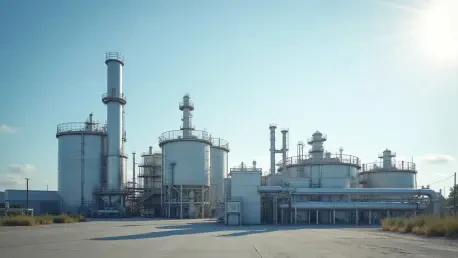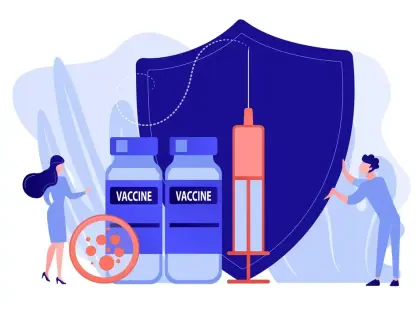In an effort to modernize policies governing liquefied natural gas (LNG) export terminals in the United States, the Trump administration has launched initiatives aimed at revising safety regulations, particularly focusing on facilities along the Gulf Coast. These existing regulations, which have remained unchanged for over 40 years, have sparked an ongoing debate about whether new measures can effectively balance advantages for industries with critical community safety considerations. This critical reassessment comes at a time when the LNG industry is undergoing significant expansion, raising questions about outdated safety standards and potential environmental impacts.
Regulatory Overhaul
The Push for Deregulation
Central to the Trump administration’s regulatory overhaul is the ambitious push to streamline processes and accelerate growth in the LNG export sector. This deregulatory approach is designed to slash administrative hurdles, thereby fostering job creation and enhancing the distribution of American natural resources on a global scale. Transportation Secretary Sean Duffy has articulated the administration’s vision as one of economic resurgence, presenting deregulation as a pathway to renewed national economic vitality and reinforced international energy leadership. Lowering regulatory barriers is perceived as a strategic move to facilitate rapid industry expansion, aligning closely with broader goals of staking out a dominant U.S. presence in the global energy market. In this context, deregulation becomes synonymous with economic opportunity and global influence, setting the stage for a competitive U.S. stance in the international arena.
Concerns from Safety Advocates
Despite the ambitious goals presented in the deregulation initiative, significant opposition comes from safety advocacy groups such as the Pipeline Safety Trust. These watchdog organizations express concern about prioritizing profitability at the potential cost of community safety, particularly around the U.S. Gulf Coast where these export terminals are often located. Bill Caram, executive director of the Pipeline Safety Trust, acknowledges the outdated nature of current regulations but warns that the administration’s proposed approach could undermine existing safety protocols crucial for protecting communities adjacent to these massive LNG facilities. Critics worry that deregulation may lead to a lack of stringent safety standards, potentially increasing the risk of accidents and environmental hazards. This push-pull between economic benefits and safety concerns underscores a complex narrative where community watchdogs advocate for comprehensive updates that prioritize public well-being alongside industry growth.
Industry Expansion and Challenges
Industry Support and Advancement
Amid the regulatory debates, industry supporters offer a contrasting perspective, endorsing comprehensive reform that they view as essential for maintaining U.S. competitive advantage in the burgeoning LNG market. Advocates including the Center for LNG contend that current regulations impose unnecessarily restrictive measures, hampering innovation and slowing progress. Proponents argue for a shift toward performance-based safety standards that better address real-world risks without stifling industry growth. This viewpoint aligns with broader strategies of promoting American LNG exports and sustaining leadership in the global energy sector, with an emphasis on adaptability and responsiveness to emerging market demands. By alleviating regulatory constraints, industry groups believe that LNG exports can accelerate, potentially doubling trade capacities and solidifying America’s influence as a global power in energy distribution.
Growing LNG Influence
The growth trajectory of the U.S. LNG industry reflects its transition from minimal exports pre-2015 to a formidable player in the global energy market today. Advances in technologies such as hydraulic fracturing have transformed domestic energy landscapes, enabling significant export capabilities hinged on sustainable extraction from shale formations. With eight operational export terminals, the U.S. now wields substantial influence in international LNG trade, setting benchmarks for capacity and efficiency. This rapid expansion underscores the pressing need for updated safety standards, particularly as flammable gases integral to refrigeration processes introduce additional safety challenges. As the U.S. continues to ramp up LNG production, stakeholders confront the dual imperatives of achieving competitive export capacities while ensuring robust safety measures that mitigate risks associated with complex hydrocarbon gases.
Safety Concerns and Delays
Incident and Regulation Delays
Recent incidents underscore the critical need for revamped safety measures within the expanding U.S. LNG industry. A tragic scaffolding accident at a construction site in Port Arthur, Texas, which resulted in multiple fatalities, exemplifies the potential dangers faced by workers and communities. Such tragedies accentuate calls for stringent, updated safety protocols amidst an industry undergoing rapid growth with ambitious projects like Woodside Energy’s $17.5 billion investment in Louisiana aimed at producing significant LNG quantities annually. However, despite clear urgency, procedural delays continue to stall the promulgation of new safety rules, with construction projects proceeding under outdated standards that may fall short of addressing contemporary risk variables. These delays illustrate the challenges faced in aligning infrastructure expansion with effective regulatory oversight, a vital discourse in safeguarding the future of U.S. LNG operations.
Administrative Stalemates
The path to establishing revised LNG safety regulations has been fraught with bureaucratic inertia and prolonged procedural hurdles, stretching beyond Trump’s administration. The Pipeline and Hazardous Materials Safety Administration (PHMSA) has been engaged in an extended information-gathering phase that has postponed the publication of concrete updates. This regulatory impasse has persisted into subsequent administrations, stalling efforts to finalize comprehensive safety protocols. Competing priorities such as combating pipeline methane emissions and refining carbon dioxide guidelines have further complicated the timeline for implementing LNG safety rules. The commencement of recent processes indicates a reset of the regulatory clock, foreshadowing potential delays as PHMSA navigates ongoing information evaluation before advancing to the finalization stage. This prolonged cycle reinforces the urgent need for streamlined regulatory processes to keep pace with evolving industry standards and protect community interests as LNG export volumes continue to rise.
Economic and Environmental Implications
Economic and Environmental Tensions
The Trump administration’s push for U.S. energy dominance has sparked divergent viewpoints regarding its broader implications, particularly concerning job creation and environmental sustainability. While advocates within the industry highlight the potential for substantial economic benefits, including bolstered trade balances and job growth by substituting coal with natural gas, environmental groups remain critical. These organizations challenge the aggressive pursuit of fossil fuel expansion, citing international pressures to drastically reduce fossil fuel reliance to mitigate climate change impacts. Tensions between economic growth aspirations and environmental preservation underscore complex dynamics shaping U.S. energy policy. Former President Biden’s initial attempts to restrict LNG-related permits met legal opposition, illustrating the contentious interplay between environmental advocacy and economic ambitions.
Consumer Concerns and Industry Ambitions
In an endeavor to update regulations overseeing liquefied natural gas (LNG) export terminals in the United States, the Trump administration initiated measures to amend safety protocols, particularly targeting facilities located along the Gulf Coast. These regulations have remained unaltered for over four decades, triggering discussions on whether new rules can successfully reconcile the benefits for industries with the essential safety needs of local communities. This important reevaluation appears at a significant moment, especially as the LNG sector is experiencing notable growth, spurring inquiries regarding outdated safety guidelines and potential environmental repercussions.
The push for revised regulations stems from a necessity to align safety standards with contemporary technological advancements in LNG processing and the burgeoning demand for LNG exports. Communities situated near these facilities are increasingly concerned about the risks, such as potential leaks or accidents, requiring a fresh look at safety protocols to mitigate dangers effectively. The conversation surrounding this regulatory overhaul is further punctuated by environmental considerations, as LNG processing and transport could impact ecosystems. Thus, balancing economic benefits with pressing safety and environmental factors remains a pivotal challenge for policymakers.









